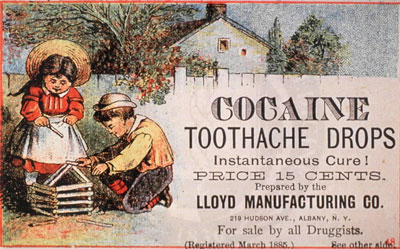19th century scientists knew that it was the salicylic acid in the willow that made it work but it irritated the lining of the mouth and stomach. By 1740 the procedure of inserting pustules from someone dying of the disease into a healthy person through a small wound was widespread in.
 Medicine In 1860s 19th Century Medicine
Medicine In 1860s 19th Century Medicine
The timeline below shows the date of publication of possible major scientific breakthroughs theories and discoveries along with the discoverer.

19th century medical discoveries. However the most famous British visual image Luke Fildess The Doctor exhibited at the Royal Academy in 1891 shows a medical man with virtually no modern equipment. Treatments in the 19 th century relied on a change of air. The juice from willow tree bark had been used as early as 400 BC to relieve pain.
Occasionally some people got sick from this and some died although symptoms were usually mild. Many medical discoveries made in the 19th century are still put into practice today Without them lots of people would die during medical procedures. 19th Century 1803- Morphine was discovered Jan 2 1816.
The majority of the objects described on this website originated in the 19th century. From autopsy to surgery in the same coat. 19th Century 1818- British obstetrician James Blundell.
Explain why there were so many medical discoveries in the 19th century. In the 19 th century midwives surgeons physicians and nurses were all deemed as unestablished until certain discoveries were made. By mid-century the stethoscope invented in France in 1817 to aid diagnosis of respiratory and cardiac disorders became the symbolic icon of the medical profession.
He developed new types of splints. There were other remedies. 19th Century 1816- Rene Laennec invents the stethoscope.
Great Physicians of the 19th Century and Why You Still Use Their Discoveries Building machines but still bleeding patients. 19th Century Medical Advances. Though cells were first discovered by Robert Hooke in.
From Macbeth-like preparations of arsenic iron or phosphorous to white coats and x-rays the Victorian era witnessed a medical revolution. Infection was rampant in heroic medicine. The 1848 edition of Buchans Domestic Medicine paints a good picture for how medicine worked back then.
Jan 1 1800 to Dec 31 1899. 19th Century 1800- Sir Humphry Davy announces the anesthetic properties of nitrous oxide. These one hundred years were remarkable for the introduction of the stethoscope the discovery of anesthesia asepsis blood pressure measurement X-rays and radioactivity.
The colored frontispiece shows the symptoms of smallpox scarlet fever and measles listed aong the general causes of illness diseased parents. They are sought by museums medical historians and antique collectors. The turn of the 19th century was an exciting time.
Explain why there were so many medical discoveries in the 19th century - YouTube. 19th century Jan 2 1800. Scientific developments were increasingly.
In 1721 inoculation using a dead or weak form of the disease was introduced in England. One of the most important revolutions in medicine in the 19th century was the development of cell theory. For example to the coast.
10 Vitamins The discovery of vitamins by Frederick Hopkins and contemporaries accomplished through feeding studies using animals at the start of the 1900s led to a far better understanding of nutrient and helped to prevent many illnesses and. Smallpox was one of the most devastating diseases of 18th century Europe. For the purposes of this article we do not regard mere speculation as discovery although imperfect reasoned arguments arguments based on elegancesimplicity and numericallyexperimentally verified conjectures qualify as otherwise no scientific discovery before the late 19th century.
In the mid-19th century Thomas Rocyn Jones set up a practice in the Gwent valleys and gained a reputation for treating fractures dislocations and muscle injuries. Emetic and laxative purgation and bleeding by cup or leech were traditional remedies. Hoffman synthesizes acetyl salicylic acid developing what is now the most widely used medicine in the world.
Bruce Robinson gives a diagnosis. How Medicine Worked in the 19th century. The hardships and diseases that accumulated during the 1800s is the primary reason why these medical professionals were establish in the means of their jobs.
Evolution is a powerful word for medical care as it seems to grow with the flow of time.